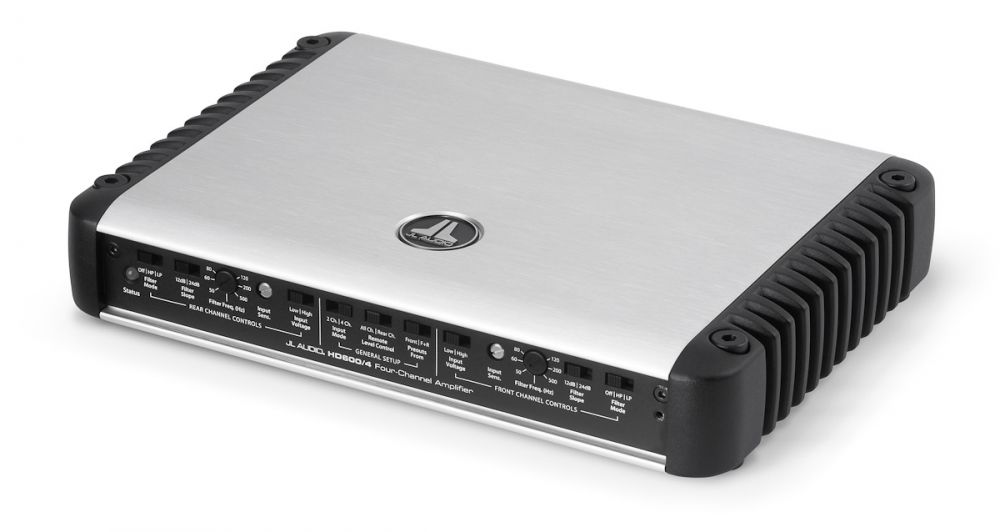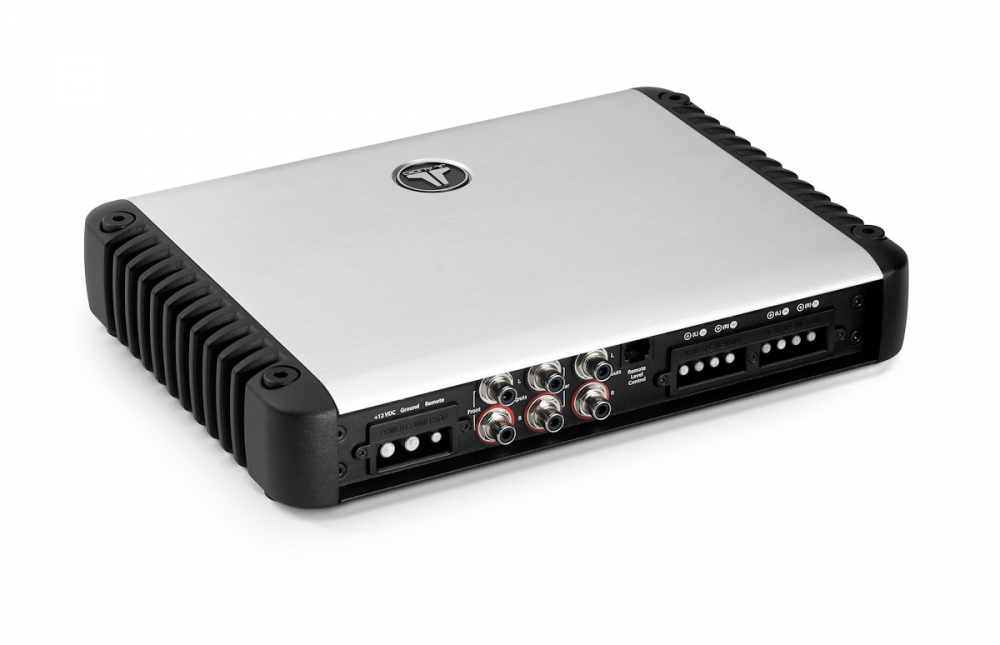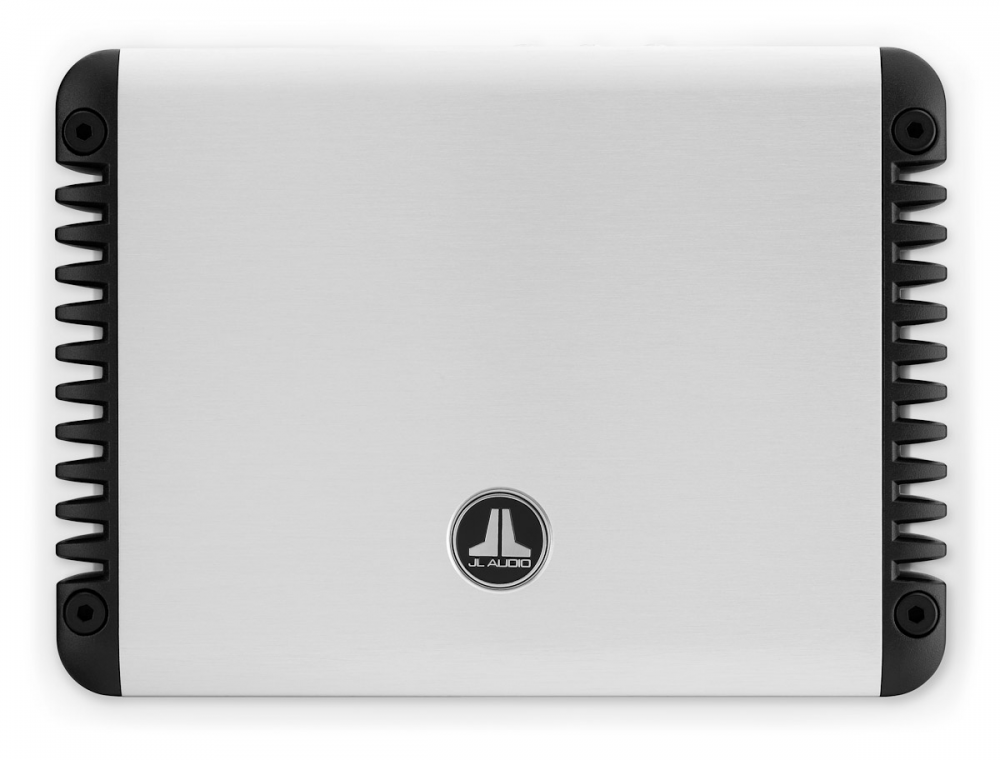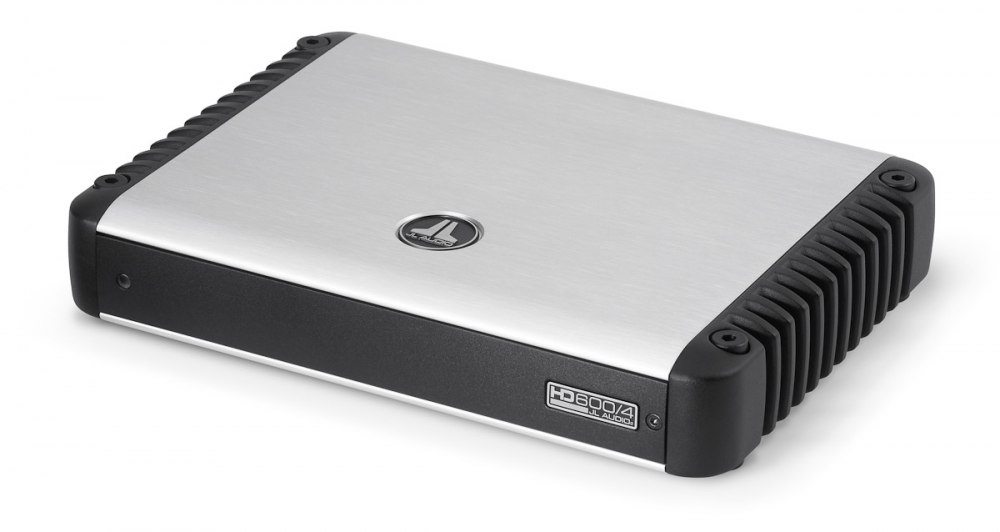





Широкополосный 4-канальный усилитель класса D, 4 х 150 Вт @ 1,5 – 4 Ом
SKU 98221 | Model HD600/4






Компактный 4-канальный усилитель высшего класса приносит выдающееся качество звучания при высокой мощности: она составляет 150 Вт (RMS) на канал в обычном стереорежиме, и 300 Вт (RMS) в мостовом включении любой пары каналов. У усилителей HD величина мощности не зависит от импеданса подключенных динамиков: он может составлять от 1,5 Ом до 4 Ом в стереорежиме, либо от 3 Ом до 8 Ом в мостовом включении. В основе исключительных характеристик лежат эксклюзивная технология Single-Cycle Control, существенно повышающая качество звучания и энергоэффективность усилителя класса D, регулируемый блок питания R.I.P.S и другие инновационные технические решения. Наряду с предельно малым уровнем искажений, усилитель отличают специальные меры для достижения высокой надежности при длительной работе на высокой мощности. Бескомпромиссная концепция ставит этот усилитель в один ряд с самыми прославленными по звучанию моделями любого типа и стоимости.
Гибкие возможности конфигурации любой пары каналов и наличие фильтров НЧ/ВЧ с расширенным диапазоном настройки делают этот усилитель отличным приобретением для аудиосистем самых разных конфигураций. Это может быть единственный усилитель в системе, либо один из нескольких – например, при работе в паре с 1-канальным HD750/1 для сабвуферного канала. Эффективно подавляющие возможные помехи дифференциальные балансные входы готовы к работе как с низкоуровневым, так и с высокоуровневым аудиосигналом.
В элегантном дизайне усилителя сочетаются светлые поверхности из матового шлифованного алюминия (brushed aluminum), а также черные нижняя панель и боковины с радиатором охлаждения из алюминиевого сплава. Нарядности добавляет съемная защитная крышка для панели управления.
- Типы фильтров
- Low-Pass or High-Pass
- Крутизна фильтра
- 12/24 dB/octave
- Диапазон регулировки фильтров
- 50 Hz - 500 Hz
- Возможность пошаговой настройки частоты среза
- Yes
- Возможность отключения фильтра
- Yes
- Проводной пульт управления
- Optional (HD-RLC)
- Режимы регулировки пультом управления
- 2 or All Channels
- Переключатель входных каналов
- Yes (2/4 ch.)
- Линейные выходы
- Buffered
- Переключатель режима линейного выхода
- Yes
- @ 4 Ома
- 150 W RMS x 4
- @ 3 Ома
- 150 W RMS x 4
- @ 2 Ома
- 150 W RMS x 4
- @ 1.5 Ома
- 150 W RMS x 4
- Мостовое включение @ 8 Ом
- 300 W RMS x 2
- Мостовое включение @ 4 Ома
- 300 W RMS x 2
- @ 4 Ома
- 150 W RMS x 4
- @ 3 Ома
- 150 W RMS x 4
- @ 2 Ома
- 150 W RMS x 4
- @ 1.5 Ома
- 150 W RMS x 4
- Мостовое включение @ 8 Ом
- 300 W RMS x 2
- Мостовое включение @ 4 Ома
- 300 W RMS x 2
- Частотный диапазон
- 6 Hz - 30 kHz (+0, -1dB)
- Отношение сигнал/шум измеренное на максимальной мощности
- >110 dB (A-weighted, 20 Hz - 20 kHz noise bandwidth)
- Отношение сигнал/шум (1 Вт)
- >88.2 dB (A-weighted, 20 Hz - 20 kHz noise bandwidth)
- Демпинг фактор @ 4 Ома
- >300 / 50 Hz
- Демпинг фактор @ 2 Ома
- >150 / 50 Hz
- Коэффициент гармонических искажений
- <0.03% @ 4 Ω per Ch.
- Чувствительность входов @ RCA
- Switchable from 200 mV - 2 V RMS to 800 mV - 8 V RMS
- Рекомендованное сечение кабеля питания с проводниками из 100% меди
- 4 AWG wire
- Номинал предохранителя
- 50 A (AFS, AGU or MaxiFuse™)
- Высота (H)
- 1.93 in / 49 mm
- Ширина (W)
- 10.74 in / 273 mm
- Глубина (D)
- 8.29 in / 211 mm
Single Cycle Control™ (U.S. Patent #6,084,450*)

Single Cycle Control™ (U.S. Patent #6,084,450*)
Summary:
High-Fidelity, full-range Class D is a reality.
Detailed Information:
Single Cycle Control is a unique approach to controlling a full-range Class D amplifier. By tracking the audio signal, comparing it to the real PWM waveform and then correcting it in each and every cycle (over 400,000 times per second), a multitude of distortion-causing mechanisms can be tightly controlled to enable pristine amplification.
In more technical terms, our approach is a non-linear control method that monitors the switched variable on a cycle-by-cycle basis so that, in each cycle, the average value of the output (power to the speaker) accurately tracks the input signal. This ensures that power supply disturbances, non-ideal switching edge behavior, component non-linearities and other distortion-causing problems are completely cancelled and taken out of the equation.
In addition to the sonic benefits of Single Cycle Control Class D, the technology also results in outstanding efficiency (80% at 1/2 rated power for the whole amplifier, including its power supply), which translates to 60% less current draw than a typical Class A/B car amplifier of equal power. This tremendous efficiency advantage also leads to less generated heat which allows the chassis size to be reduced to about 1/4 the size of a similarly powerful Class A/B design.
So, while there may be less expensive ways to make a full-range switching amplifier, no other Class D control system works faster or more accurately than Single Cycle Control™, which is why no other mobile audio amplifier in the world performs like a JL Audio HD.
* Patented technology used under exclusive license for mobile audio from PowerPhysics, Inc. - Newport Beach, CA
R.I.P.S. – Regulated, Intelligent Power Supply

R.I.P.S. – Regulated, Intelligent Power Supply
Summary:
The remarkable R.I.P.S. System ensures consistent power delivery over a wide range of battery voltages and load impedances.
Detailed Information:
R.I.P.S. stands for "Regulated, Intelligent Power Supply" and is a central feature of JL Audio's 'Slash' and HD amplifiers.
"Regulated" means that the power supply adjusts its operation so as to maintain the amplifier's rated power output and low distortion operation over a wide range of vehicle voltages (11V-14.5 V). This contrasts with conventional, "unregulated" power supplies, which allow rail voltages to sag in direct proportion to drops in the supply voltage. This can result in significant power losses when battery voltage decreases, even if those voltage dips are short in duration. This manifests itself audibly as increased distortion. With a JL Audio R.I.P.S.-equipped amplifier, the rail voltage and clean power output remain completely stable in real-world systems, resulting in superior fidelity and stability.
The "Intelligent" portion of the R.I.P.S. System is a circuit that actually monitors output current to optimize the amplifier's output power over a wide range of load impedances (1.5 ohm to 4 ohm per channel).
Conventional amplifiers are designed to produce optimum power at a particular impedance (2 ohms, for example). When asked to run above that impedance (say, 4 ohms), these amplifiers lose power (half their power from 2 ohms to 4 ohms). This will not happen with a JL Audio HD or 'Slash' amplifier because the R.I.P.S. System detects the actual impedance being driven and adjusts the amplifier's operation to deliver optimum output. The entire process is seamless, automatic, and results in incredible dynamics for satellite channels and consistent power output for a wide range of subwoofer configurations. It also takes into account the real impedance of the system, rather than relying on often inaccurate assumptions based on a speaker's rated impedance.
The bottom line: Optimum power, at any impedance between 1.5 ohm and 4 ohm per channel, at any vehicle voltage between 11V and 14.5V.
Advanced Rollback Protection

Advanced Rollback Protection
Summary:
JL Audio's exclusive Advanced Rollback Protection circuit monitors the amplifier's thermal condition and adjusts amplifier operation to eliminate annoying amplifier shut-down events.
Detailed Information:
Should a JL Audio amplifier equipped with Advanced Rollback Protection reach an unsafe operating temperature, a special circuit rolls back peak power output, without changing gain, until the amplifier cools down to a safe operating temperature. The red "Thermal" LED will light to indicate this condition has been reached. Once the amplifier cools down, the circuit restores full peak power output and the red "Thermal" indicator reverts to its normal state. The operation of Advanced Rollback Protection is inaudible in most cases, but it ensures that your music keeps on playing, even under the most demanding conditions.
RealSink™

RealSink™
Summary:
Vertical, cast alloy fins effectively dissipate heat, without resorting to noisy fan-cooling.
Detailed Information:
Most car audio amplifiers rely on big lumps of metal that do a good job of storing heat, but not such a great job of getting rid of it. RealSink™-equipped JL Audio amplifiers feature real cast-alloy heat sinks with vertically-oriented fins. This design is far more effective than the lump-of-metal approach, utilizing the physics of convection and radiation to more effectively exchange heat with the surrounding air. The design of these heat sinks was refined through extensive finite-element analysis, resulting in amplifiers that keep their cool under the most demanding conditions.
HD Mounting Options

HD Mounting Options
Summary:
Two mounting options plus a space-saving stacking feature ease installation.
Detailed Information:
The compact dimensions of the HD amplifiers open up a whole range of installation options simply not possible with larger designs. To give you as many mounting options as possible, the design incorporates flexible mounting options for single or multiple amplifier installations.
Standard Mounting: The mounting screws secure the amplifier to the mounting surface and are concealed by the four corner caps, resulting in a very clean look.

Lateral Mounting Feet: Lateral Mounting Feet are also included with HD amplifiers to provide an alternative mounting option. This can be very useful in tight space applications or when mounting pre-stacked, multiple HD amplifiers.

Optional HD Stack Kit: Permits stacking of one HD amp to another HD amp (sold separately).

Differential-Balanced Inputs

Differential-Balanced Inputs
Summary:
JL Audio’s Differential-Balanced Inputs are engineered to combat induced cable noise, which is a common problem in car and marine audio installations. This technology allows for the use of conventional RCA cables, while delivering many of the benefits of a true balanced connection and accepting a wide range of input signal levels.
Detailed Information:
Today’s vehicles are equipped with sophisticated electronics capable of generating noise and interference that can intrude into the audio path, ruining the listening experience.
Most audio equipment uses single-ended, ground-referenced RCA jacks to receive audio signals. This means that the RCA shield is connected directly to signal ground. This is a simple, cost effective input design that works well for short runs in noise free environments. In noisier environments, this method cannot reject the common mode noise that could be on both RCA conductors (shield and center conductor).
By having more than one chassis-grounded RCA shield on a device, single-ended input designs are also more susceptible to ground loops. If noise is present on both conductors while the shield is connected to ground, the input amplifier will amplify the noise relative to the grounded RCA shield. When there are multiple RCA connections or any other conductors subjected to a magnetic field, this will cause a difference in potential across the RCA loop to be amplified at the grounded RCA as noise (a classic ground loop).
JL Audio’s Differential-Balanced Input circuits measure the center pin of the RCA connection relative to the RCA shield, even when the shield is not connected to ground, and even when the voltages at both conductors are moving relative to ground. Because both the center conductor and the shield see high impedance to ground at the input, a ground loop cannot be formed, as there is no current flow to induce a voltage as noise. This works equally well with differential-balanced, or unbalanced signal sources, making this input architecture compatible with all standard car and marine audio equipment, using standard, unshielded, twisted-pair RCA cables. No special cables are required, unlike the fully balanced connections used in professional audio.
Another benefit of the Differential-Balanced Input design is that it easily accepts low-level and high-level signals from a variety of factory head unit outputs and amplifiers, including single ended “ground referenced” sources, as well as Balanced or Unbalanced “Bridged or BTL” sources. This eliminates the need for Line Output Converters (LOCs) in most installation scenarios.
The obvious question is: “Why don’t all car audio amplifiers use Differential-Balanced Inputs?” The answer is simple: it costs more. Executing a proper differential-balanced input section requires more components and better quality components than a basic single-ended design, so you generally won’t find them on less expensive amplifiers.